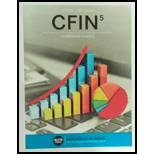
Concept explainers
Weighted Average Cost of Capital (WACC) is the required
An optimal capital structure of a company is a mix of debt, equity and preferred stock which can be used to maximize the company’s stock price. Therefore, a target proportion of capital structure and cost of each financing can be used to determine the WACC of the company.
Here,
Proportion of debt in the target capital structure “
Proportion of preferred stock in the target capital structure “
Proportion of equity in the target capital structure “
After tax cost of debt, preferred stock,
Marginal Cost of Capital (MCC) is the weighted average cost of capital for the last dollar raised in new capital. MCC of the company remains constant for some time after which it increases. This depends on the amount of additional capital raised and eventually increases as the cost of raising new capital is higher due to flotation cost. This is mostly evident in case of cost of equity, where first the retained earnings are utilized by the firms to meet their target capital structure and any excess fund required is raised through new equity. So, as new equity is added to the fund, the marginal cost of raising the fund also increases.
The target capital structure for the company is 60% debt, 10% preferred stock and 30% common equity. Marginal tax rate is 30%, with before tax cost of debt, cost of preferred stock, cost of retained earnings and cost of new equity being 5%, 7%, 11% and 13%, respectively. The company generates $27,000 in retained earnings and needs to raise $85,000 in capital.
Want to see the full answer?
Check out a sample textbook solution
 Essentials Of InvestmentsFinanceISBN:9781260013924Author:Bodie, Zvi, Kane, Alex, MARCUS, Alan J.Publisher:Mcgraw-hill Education,
Essentials Of InvestmentsFinanceISBN:9781260013924Author:Bodie, Zvi, Kane, Alex, MARCUS, Alan J.Publisher:Mcgraw-hill Education,

 Foundations Of FinanceFinanceISBN:9780134897264Author:KEOWN, Arthur J., Martin, John D., PETTY, J. WilliamPublisher:Pearson,
Foundations Of FinanceFinanceISBN:9780134897264Author:KEOWN, Arthur J., Martin, John D., PETTY, J. WilliamPublisher:Pearson, Fundamentals of Financial Management (MindTap Cou...FinanceISBN:9781337395250Author:Eugene F. Brigham, Joel F. HoustonPublisher:Cengage Learning
Fundamentals of Financial Management (MindTap Cou...FinanceISBN:9781337395250Author:Eugene F. Brigham, Joel F. HoustonPublisher:Cengage Learning Corporate Finance (The Mcgraw-hill/Irwin Series i...FinanceISBN:9780077861759Author:Stephen A. Ross Franco Modigliani Professor of Financial Economics Professor, Randolph W Westerfield Robert R. Dockson Deans Chair in Bus. Admin., Jeffrey Jaffe, Bradford D Jordan ProfessorPublisher:McGraw-Hill Education
Corporate Finance (The Mcgraw-hill/Irwin Series i...FinanceISBN:9780077861759Author:Stephen A. Ross Franco Modigliani Professor of Financial Economics Professor, Randolph W Westerfield Robert R. Dockson Deans Chair in Bus. Admin., Jeffrey Jaffe, Bradford D Jordan ProfessorPublisher:McGraw-Hill Education





